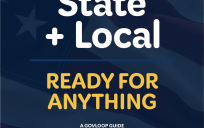While no formula is perfect, and PeerIndex, which is still in Beta, has plenty of room for growth, I was excited to ask Azeem Azhar, Founder of PeerIndex, a few questions.
Q. There are several grading/ranking systems in the market today, including PeerIndex of course. Is it important, in your opinion, that we ultimately only have one or are there benefits to multiple systems?
A. It is better to have a two or three ranking systems–because users can then assess their applicability or value. We’ll all use different models, perhaps emphasise different characteristics for different applicability. But as a buyer of or user of rankings, I want to know that I have choice. You don’t want too many systems, but a fair smattering seems like a good outcome. And also you want them to be competitive and not government-mandated like the NRSROs (S&P, Fitch and Moodys).
Q. What key partnerships have you established to raise the visibility of PeerIndex?
A. We’re new out of the gate, but you’ll start to see more integrations in coming months.
Q. What key partnerships have you established that benefit PeerIndex users?
A. Ditto–but there are benefits to having a PeerIndex profile, and people will start to see them this year.
Q. Giving a grade to an individual or organization is complex. In my opinion it is important to look at Facebook (accounts, pages, groups), LinkedIn (accounts plus groups), Twitter, and blogs. What is your thinking and how soon will PeerIndex be able to weigh in all of these if you agree that they are important?
A. I think you have to step back and understand the objectives of ranking/rating systems. The main objective is to help someone who doesn’t know the person or thing being rated understand that person or thing. That thing could be a corporate bond where the Moody’s rating helps you assess its relative risk to other similar instruments. Or it could be a person, where PeerIndex ratings help you understand the authority (or trustworthiness) of someone on a given topic relative to the population at large.
The question then is what signals do you bring to bear on scoring your rating. Clearly we take a laundry list of stuff – every tweet, every friend, follower, location, URLs, semantic analysis to boot — many thousands of factors are weighed up for any given full profile. Today we don’t expose all of that data (for example, we don’t show you how many times you were Retweeted), but we do capture it. But even if you have all those signals you need to work out to what extent do you weight those given signals–for example, what is the value of list membership versus being retweeted? Is a ‘like’ on Facebook worth more than a connection on LinkedIn? And then how do you estimate all those features for an individual user versus the population at large? And finally, do you get any predictive value from adding those extra features or not? (If not, an Occam’s Razor principle needs to come to bear.)
So the question of whether something is important or not, isn’t really a matter of opinion. It is a matter of testing against the outcome you are trying to achieve. Perhaps one of these extra factors matters, perhaps it doesn’t. As we iterate our models, we’ll get better at including things that do matter and those that don’t.
Q. How many registered users does PeerIndex have today?
A. Nice try! We went into a public beta at the end of July. We have enough for us to be happy.
Q. If Twitter and Facebook are able to reach their 1 billion member target would you be able to support grading 1 billion members?
A. Well Twitter and Facebook are going after different 1 billions, so call the overlap 1.5 billion. And the answer is absolutely yes.
Q. While overall grades are interesting they become even more interesting, in my opinion, as you look at categories and locations. Is there any thought around grading users and organizations in more granular ways?
A. Yes-we’ll have some news about that relatively soon. Sure–we made some assumptions in our first cut of the product about what people would want to see, and what would deliver value. One of those assumptions was that an extremely simple dashboard would hit the spot–what we’ve learnt is that people want to look at each other in ‘more granular ways’ as you put it.
Q. What are the big challenges you see over the next six to twelve months?
A. I thought really hard about this. We’re an entrepreneurial venture, and as such imbued with delirious optimism and faith in our ability to read ambiguity and solve problems–so perhaps it’s our self confidence!




Hadn’t heard of this one. Checking it out. How long will it be before the most successful influence ranking company is one that aggregates the scores generated by several of the others?